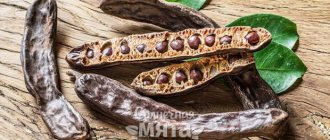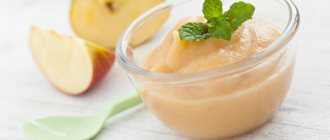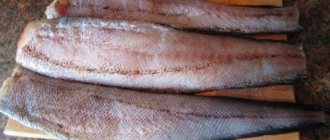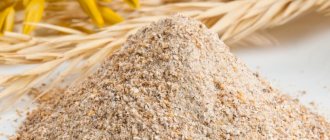Pollock is a fish from the cod family; it is caught in the northern Pacific waters, the Barents, Japan and Okhotsk seas. Its prey is much larger than that of other fish species. After spawning, the eggs develop at a depth of 50 meters and are fished for fishermen.
In Ancient Rus', red and black caviar from valuable breeds were considered exquisite delicacies. But the “white” one, made from cod fish (including pollock), was valued for its delicate taste, availability and high nutritional properties.
Benefit
White pollock caviar now, as in ancient times, is an affordable budget product, for which the demand is not very high due to its specific taste and unusual consistency.
It is consumed as an additive to sauces and salads, or as a separate dish. I would like the reader to know that its nutritional value is no lower than that of “noble” red and black caviar: its protein is completely absorbed by the body, while also receiving fat-soluble vitamins A and B, iron, folic acid, other minerals and organic compounds . When eaten, it will help balance the mineral and vitamin balance, normalize blood pressure, and help increase blood hemoglobin. And fish oil, thanks to polyunsaturated fatty acids, prevents cardiovascular diseases and the thyroid gland, helps the body restore cellular tissues and mucous membranes. The high fluoride content helps the formation of bone tissue and tooth enamel (in interaction with calcium and fluoride).
Very useful:
- with unbalanced nutrition, exhaustion
- for pregnant women and during lactation (breastfeeding)
- For children and teenagers (during active growth).
Dietary product – can be used in therapeutic and prophylactic diets due to its unique composition:
- For atherosclerosis
- cardiovascular diseases
- for the prevention of thyroid diseases
- for anemia
- for violations of the mineral and vitamin balance.
Improves the condition of skin and hair; strengthens nails, helps improve vision. The benefits of eating pollock caviar are unconditional, but there are some contraindications, which we will discuss below.
Beneficial features
With this seafood, the human body receives Omega-3 polyunsaturated fatty acids, which it does not produce itself. They ensure normal blood flow in the vessels, and the platelets inside do not stick together. Omega-3 fatty acids are important for preventing heart attacks and strokes. In addition, they help remove bad cholesterol from the body and prevent its accumulation.
The product contains a significant amount of nicotinic acid (also known as vitamin PP). This substance helps prevent the development of pellagra, the so-called “three D” disease. Its symptoms are dermatitis (skin disease), diarrhea and dementia (mental decline). Vitamin PP is important for stabilizing blood supply to the brain.
Everyone needs phosphorus - both adults and children - to strengthen bones, and this element is also useful for the organs of vision.
Caviar also contains calcium, which is also important for healthy bones and teeth. The product also contains a lot of protein, which promotes the formation of new cells and tissues in the human body.
Harm
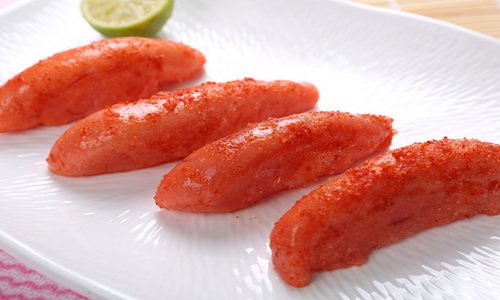
Rational inclusion of the product in the diet brings only benefits. It is still not necessary to abuse it due to its high calorie content, protein composition and fat content: the product is very nutritious and can cause weight gain. In addition, due to the deterioration of the environmental situation and widespread water pollution with various wastes, including radioactive ones, the quality of fish does not improve and is completely dependent on the environment.
Individual cases are also possible: intolerance to the product or its components, resulting in allergic reactions.
Pollock caviar - harm and benefit, daily intake
Pollock is a member of the cod family and is caught today in very large quantities. Pollock caviar, one of the most affordable sea delicacies, has no less nutritional value than meat.
Due to its rather specific taste and strong fishy aroma, not everyone loves it. But those people who nevertheless included the product in their diet have the right to count on receiving not only gastronomic pleasure from it, but also noticeable benefits. In terms of the volume of valuable substances, the product is in no way inferior to its red and black counterparts, and in certain indicators even surpasses them.
Composition of pollock caviar
Breakout caviar of commercial fish has a relatively high calorie content for this type of product - 132 units per 100 g of product.
A distinctive feature of the composition is a high level of protein content, a small amount of fat and an almost complete absence of carbohydrates.
This allows us to regard pollock caviar as a product that is necessary for cell restoration, synthesis of hormones, antibodies and enzymes.
The delicacy also contains substances on which the benefits and harms of the product depend:
- Vitamins A, groups B, C, PP and E.
- Macroelements sodium, potassium, magnesium, calcium, phosphorus and sulfur.
Tip: Today in stores you can find bright pink or yellow pollock caviar. Many people find such products more attractive and appetizing. Do not forget that the real product has a delicate white-beige color. Any deviations from this indicator imply the presence of dyes, which significantly reduces the usefulness of the composition.
- Microelements fluorine, iron and molybdenum.
Sellers offer salted and lightly salted caviar from a member of the cod family. The first option has a longer shelf life, the second does not have such a rich taste. When choosing the optimal type of product, you need to be based on your taste preferences and tendency to edema. If the body retains liquid, then it is better to refuse the salty analogue.
Beneficial properties of pollock caviar
On the table, pollock caviar can be presented as an independent dish, a topping for a sandwich, a component of a salad or a thick sauce. Regardless of this, the protein in its composition will be completely absorbed by the body. Vitamins and minerals, provided there are no intestinal problems, will also be processed in full.
These qualities of the delicacy allow you to expect the following effects from its consumption:
- The mineral and vitamin balance is normalized, hemoglobin levels increase, and high blood pressure decreases.
- Ingestion of fish oil reduces the risk of developing diseases of the heart, blood vessels and thyroid gland.
- The mucous membranes of the body and tissues begin to recover faster. Bone tissue and tooth enamel are strengthened.
- Visual acuity increases, the eyes stop drying out due to prolonged intensive work.
According to experts, pollock caviar should be included in the diet of people with the following indications:
- Exhaustion of the body, unbalanced nutrition.
- The period of pregnancy and natural feeding of the child.
- Time of active growth of the child's body.
- Atherosclerosis and cardiovascular pathologies.
- Risk of decreased thyroid function.
- Anemia.
- Deficiency of vitamins and minerals.
In case of pregnancy and a history of chronic diseases, the inclusion of pollock caviar in the menu should be agreed with the attending physician. In some cases, a valuable product can do more harm than good.
Harm of pollock caviar, contraindications for use
Eating pollock caviar in limited quantities can only bring benefits to the body. All of the above effects will be achieved by including the product in the diet, 1-2 tablespoons up to 2-3 times a week.
Exceeding these dosages can lead to weight gain and create significant stress on the kidneys. We should not forget that not all modern reservoirs can boast of environmental cleanliness.
You need to pay attention to the area from which the delicacy comes.
Among other things, pollock caviar is not recommended for consumption if there are the following contraindications:
- Allergy to fish products or specifically to this product.
- Some diseases of the kidneys, liver, thyroid gland (consultation with a specialist is required).
- Increased blood cholesterol levels.
- Increased levels of calcium in the body (and some other minerals).
- Peptic ulcer of the stomach and duodenum.
- Hypertonic disease.
Childhood, as well as the period of pregnancy and lactation, is not a contraindication to the introduction of pollock caviar into the diet. But it is better to first consult a doctor about this, especially when it comes to children who are not yet 2 years old. The delicacy is not a strong allergen and is rarely poorly perceived by the child’s body.
Of course, you can get the maximum benefit from pollock caviar prepared at home. If this is not possible, you should pay attention to a loose product.
Before purchasing, you can try it and evaluate the degree of freshness and saltiness. But you don’t need to give up the tin or glass jars that are familiar to many. The product is packaged in small volumes, which is very convenient.
You just need to familiarize yourself with its composition and make sure that food additives and preservatives are not present in it.
Calorie content
The calorie content of the product is high: 132 kcal/calories per 100 grams, so to organize proper nutrition you need to know the calorie content in different measures; they are shown in the table below:
| Measuring container | Weight (in grams) | Calorie content (k/calories) |
| 1 teaspoon | 12 | 15. 84 |
| 1 tablespoon | 35 | 46. 2 |
The benefits of pollock caviar
We can say that the benefits of pollock caviar lie 100% in the vitamin and mineral composition of the product. The chemical composition of pollock caviar contains vitamins A, B, C, as well as E and PP. In addition, the benefits of pollock caviar lie in the product’s content of such undeniably useful natural compounds as phosphorus, iron, sodium, magnesium, potassium, molybdenum and others.
Pollock caviar is enriched with proteins of natural origin, which are easily absorbed by the human body. The calorie content of pollock caviar is quite low. As a rule, the calorie content of pollock caviar does not exceed 132 Kcal, which is per 100 grams of product. Researchers claim that pollock caviar is as beneficial for the human body as black or red caviar.
Salted pollock caviar, which can be purchased ready-made in grocery stores, has a special taste value. In addition, you can salt pollock roe at home. The chemical composition of homemade pollock caviar will be free from various food additives that are necessarily involved in the modern food production process.
Contraindications

This caviar also has contraindications for inclusion in the diet:
- allergy sufferers (allergic reactions to fish products)
- for certain diseases of the thyroid gland, kidneys and urinary system
- for high cholesterol
- with high calcium levels
- for hypertension and gastrointestinal ulcers (due to high sodium content).
Not harmful for pregnant women; for small and infant children - only with the permission of a doctor.
Beneficial properties of pollock caviar
- Has a beneficial effect on brain function.
- Normalizes the activity of the gastrointestinal tract.
- Positively affects the central nervous system.
- Increases immunity.
- Restores cells and tissues.
- Synthesizes antibodies.
- Normalizes metabolic, mineral and vitamin processes.
- Helps in the treatment of thyroid diseases.
- Preventive drug for cancer.
- Increases resistance to colds and viral diseases.
- Improves intestinal microflora.
- Improves hormone production.
- Strengthens bone tissue and tooth enamel.
- Promotes restoration of mucous membranes.
- Cleanses the circulatory system, promotes hematopoiesis.
- Increases potency.
- Effective in treating anemia.
- Improves coordination of movements, memory.
- Controls blood cholesterol levels.
- It has anti-inflammatory, immunostimulating, regenerating, choleretic, antimicrobial effects.
- Improves visual acuity.
- Reduces blood pressure.
The product is completely absorbed by the body and is easily digestible. Caviar can be consumed just like that, or you can prepare snacks, salads, and sauces based on it. Nutritionists recommend including the product to all supporters of a healthy diet. It is useful to use in old age and childhood, as well as after illnesses for rapid recovery of the body.
The nutritional value
You can calculate the nutritional value of pollock caviar for any portion using a food nutrition calculator.
Table: amount of valuable substances in 100 grams (calorie content - 132 k/cal):
| Name | Weight (in grams) | % ratio to average daily requirement |
| Fats | 1. 8 | 3. 2 |
| Squirrels | 27. 9 | 60. 7 |
| Carbohydrates | 1. 1 | 0. 4 |
| Sodium | 2 206. 0 | 170. 0 |
As you can see, the product is high in protein and low in carbohydrates; this must be taken into account when creating a menu. Protein is the basis for cell production and repair; it is involved in the production of hormones, enzymes and antibodies. If the body does not have enough energy calories from carbohydrates and fats, then protein is broken down and converted into additional energy.
Chemical composition

Perhaps in any store you can find canned pollock caviar on the shelves. The benefits and harms of this seafood will be similar to fish fillets. And in order to evaluate this, it is necessary to first study the chemical composition of pollock.
This fish is found mainly in Pacific and Atlantic waters. It is a cod fish and lives on the bottom. Pollock chooses small mollusks and plankton as its main food.
The vitamin and mineral composition of pollock fillet is pleasantly surprising, so it is difficult to doubt the enormous benefits of such fish.
Component composition of pollock:
- vitamin PP;
- retinol;
- calcium;
- molybdenum;
- ferrum;
- ascorbic acid;
- pyridoxine;
- chlorine;
- potassium;
- iodine;
- sodium;
- folic acid;
- riboflavin;
- vitamin B1.
In addition to the above macro- and microelements, vitamins, pollock is enriched with a number of acids, saturated, poly- and monounsaturated.
On a note! Cod fish contains high concentrations of selenium and iodine. This fish is an excellent source of protein.
As for the nutritional value of pollock, it is low and amounts to approximately 72 kilocalories. Of course, with heat treatment and the addition of additional ingredients, the calorie content may increase. Fried pollock caviar has the maximum energy value. It is approximately 112 kilocalories per 100 g of product.


